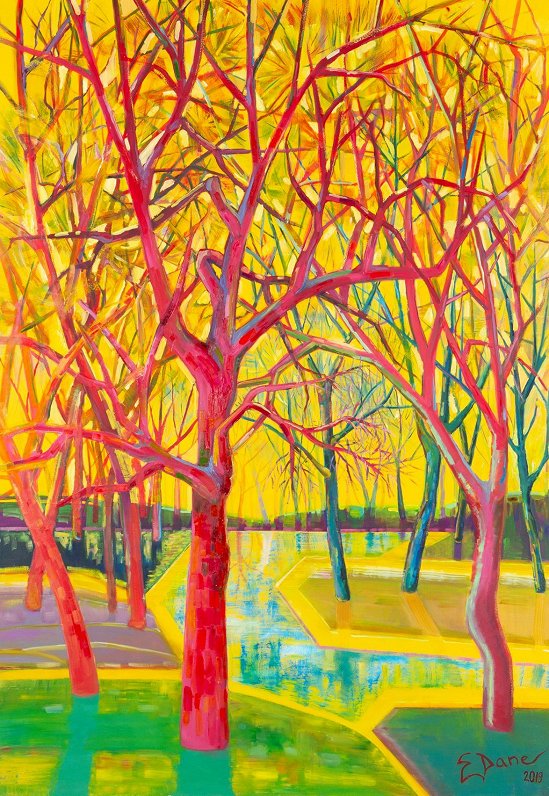Having graduated from JRRMV with a specialization in visual art, Felicita Gāga will be attending the prestigious Design Academy Eindhoven next year.
“In my opinion, it's very relevant today. It's the artist's trade that is very competitive, and if you are the best in your field, you can earn a lot. And, of course, the most important thing is that you like what you do, that you love your work. Some, perhaps, associate with bohemian ease, but it's actually very hard work and requires a lot of knowledge,” explained Felicita.
Felicita Gāga is one of this year's 24 JRRMV graduates. Besides her, two more graduates are leaving Latvia to study abroad, while others will attend such local schools as the Art Academy of Latvia and other art universities.
Ieva Taranda, who has served as a teacher at JRRMV for 18 years, remarks on the growing number of students who choose to specialize in multimedia art.
“Trends change as time passes. And our illustrations, which include painters, sculptors, and graphic artists, are proportionate to multimedia artists – filmmakers, web designers and photographers. Children are increasingly choosing these visual communication forms, and I wouldn't want to say that it's a bad trend,” said Ieva Taranda.
No matter what path the student chooses, in the first years at JRRMV he or she is still expected to study traditional painting, to go outside with an easel and learn how to mount a canvas on a frame, to understand how to draw a David and how to sketch a human figure in three minutes.
Latvia happens to be one of the few countries whose art schools still provide their students with such an academic foundation, for which the students are very grateful.
“My students who have graduated from various universities abroad tell me that it was immensely useful! Because they find it much easier afterwards, they are much more adroit on the Internet, they are able to make a composition a lot faster, they save a huge amount of time by already knowing these things,” noted Taranda. “One of students has just graduated from Central Saint Martins in London and she said – thank god I knew how to draw David, how to paint, it was an enormous advantage!”
Felicita Gāga also sees this classical foundation as a huge asset which can later be built upon with one's most daring and innovative ideas.
Her own graduation thesis consist of a short film titled “Insides” (Iekšpuses) which looks into the world of emerging ballerinas. The focal points of the film are three twelve-year-old dance school students. For two of them, lessons in Rīga are an added challenge, as their home is Liepāja.
“It made me reflect a lot – how these girls could be so brave and conscientious. It's interesting to get to know their first steps before they get into the opera. To look at ballet from the other side,” said Felicita.
Felicita Gāga's film, alongside the work of other JRRMV graduates, will be exhibited in the milk pavilion of the Rīga Central market from July 5 to July 11.
This will be the second time that the school's diploma exhibition goes beyond the school grounds. The curator of the exhibition Ieva Taranda believes that the work is worthy of a wider audience, and choosing a location outside of the school also presents a good experience for the students themselves.
“The community is so different there. To tell the truth, this will be a challenge for the students, they will be forced to answer many questions because the community is diverse and critical. It will be the first time we throw our little “puppies” out and they are forced to swim. But it's all part of an adult's and a young artist's existence. It's a baptism for them,” Taranda emphasized.
The aim of art is to reflect not the outward appearance of a thing, but its emotional meaning – these are the words that first greet a visitor to the JRRMV homepage. How do the young artists understand the term “art”?
"It's the truth. The art is the truth. And that's what I am aspiring to,” said Gāga.































